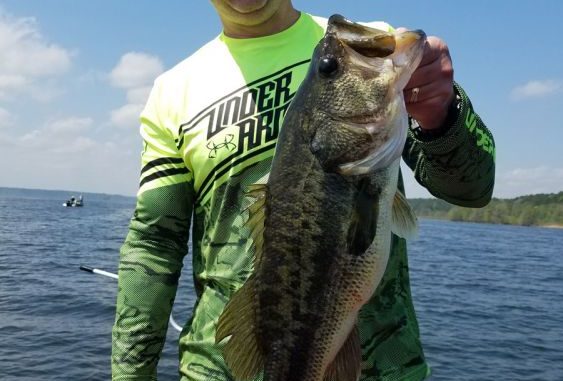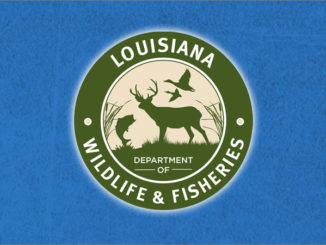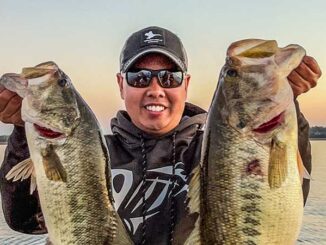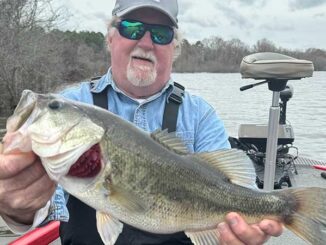
When I see a big ol’ bass on a bed in March at Toledo Bend, one of the techniques I use to get her to bite, even though she really doesn’t want to, is “soak” the soft plastic I’m casting.
I’ll leave that trick worm, wacky worm or Senko right in front of her face until she can’t stand staring at it for a minute, two minutes or, even longer, and finally engulfs it. If it doesn’t happen, rinse and repeat, as they say.
That’s my most effective method of putting spawning bass in the boat at this time of the year. Soak the bait — deadstick it — that’s something that’s been working for years, particularly on hawgs on their nest.
It’s that time of year, early spring, when Toledo Bend’s bass fishing shines. As I write this, I cannot wait for that time. From this point on it’s going to get better and better for bass fishing success on this great border lake shared by Louisiana and Texas.
I tell you what, a lot of people are fishing right now, cold or no cold, despite water temperatures as low as the middle 40s, with some in the low 50s.
A 10-pounder was weighed this past weekend ,and the B.A.S.S. collegiate anglers had a good run until an eerie, heavy fog blanketing the water ended their tournament prematurely. I’ll say this: 14 10-pound plus bass have been weighed in the Toledo Bend Lunker Bass Program since May ,and I expect that number to rise and this year’s total to possibly break last year’s total of 72. It’s going to be a pleasure to see boats line up behind Toledo Town and Tackle to weigh lunkers in March.
In fact, those big girls should start showing up with regularity in late February. You see, whether the water’s 45 degrees or 55 degrees, when those huge female bass are swollen with eggs and ready to lay them, they will. They don’t have a clock or thermometer in their body.
The surest way of finding spawning bass, after some days of 65- to 75-degree weather, of course, is to look for the “dirt spots,” clean, sandy bottoms on the other side of the grass. Look for that inside grass line … The hard bottom area can be no bigger than your boat or stretch for half-a-mile.
The pool stage now is in the 167-range like it has been since late summer due to the construction at the dam. For the second straight spring, for sure, I don’t anticipate a high-water period, so fishing for bass in the bushes won’t come into play (except for isolated places up north).
The spawning bass you’re in search of should be in 3- to 6-foot depths. Sight fishing will be the real deal when they lock up on their beds. And that means a steady diet of soft plastics such as Carolina rigs, which I use 75 percent of the time, trick worms, wacky worms and Senkos.
Also try Flukes and the old reliable U99s with 3/0 EWG hooks and a 1/32- or 1/64-weight to keep the nose down. Otherwise the slightest of breezes can move your presentation out of the strike zone before you want it to leave.
Top color for the soft plastics? No question, the No. 1 hue is watermelon/red, followed by green pumpkin/red.
Remember, not all the fish will be spawning. But you can intercept migrating bass in the “highways” — drains, ditches, creeks, (whatever terminology you use) and catch them on red Rat-L-Traps, gold/orange jerkbaits and shad-colored ChatterBaits.
I added a Minn Kota Ul Tracks I-Pilot to my Skeeter. After using a hand-controlled trolling motor for four decades, I can’t wait for such a useful tool to keep me where I want to be.
If you want to catch bass in March, and see how those new trolling motors work to keep you on the fish, I’ve been guiding on this lake most of my life and you’re more than welcome in my boat. Give me a call at (936) 404-2688.


